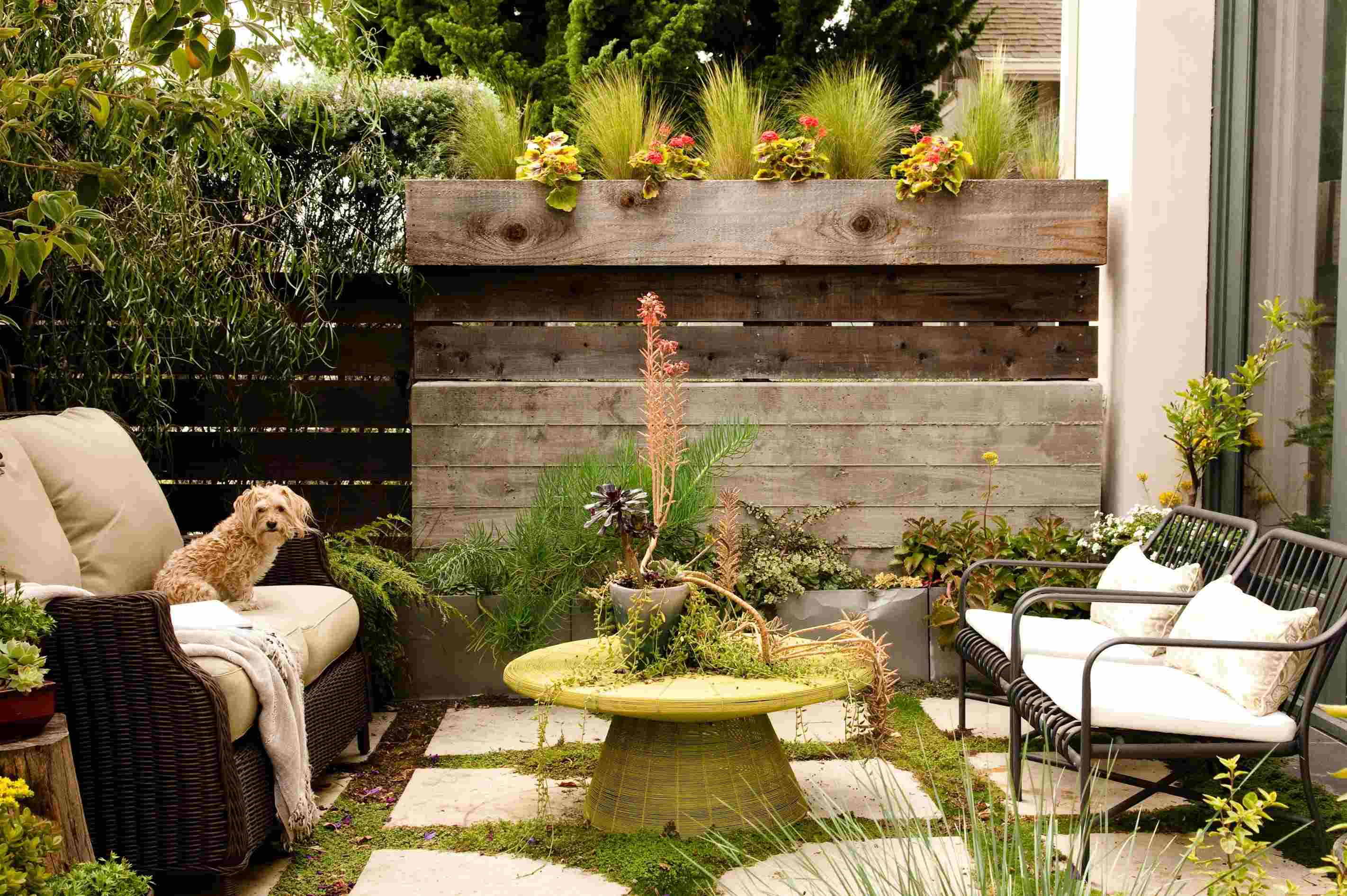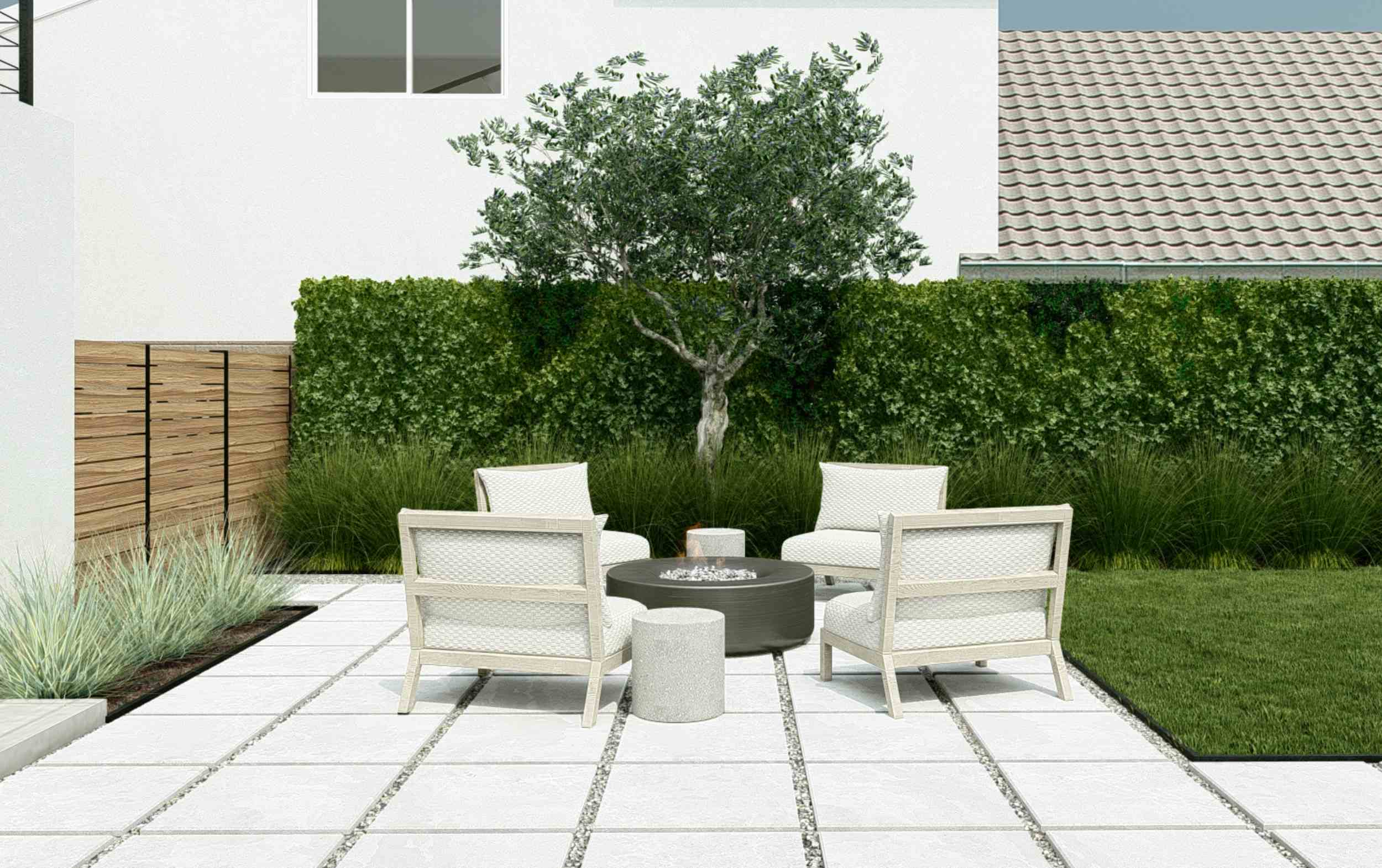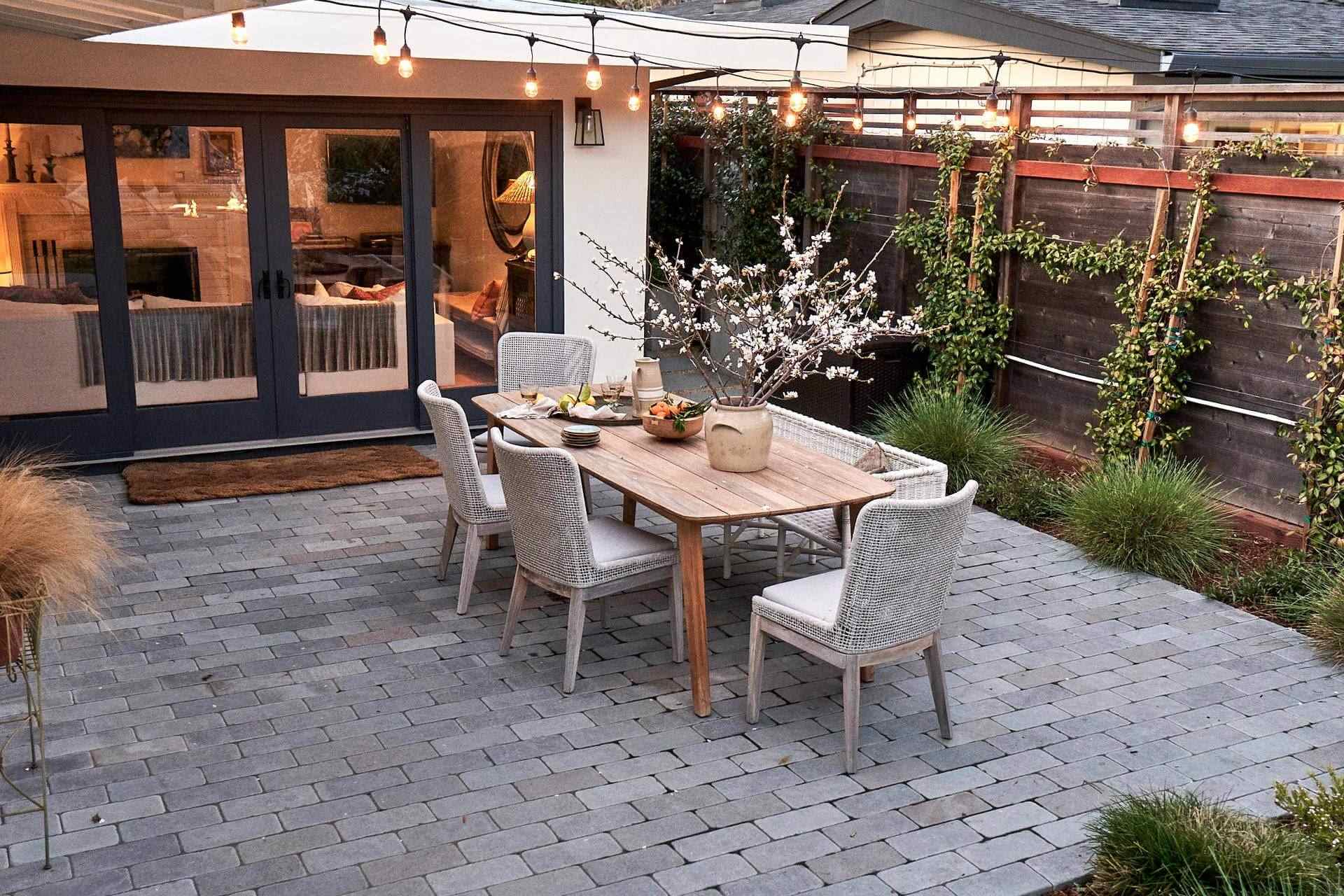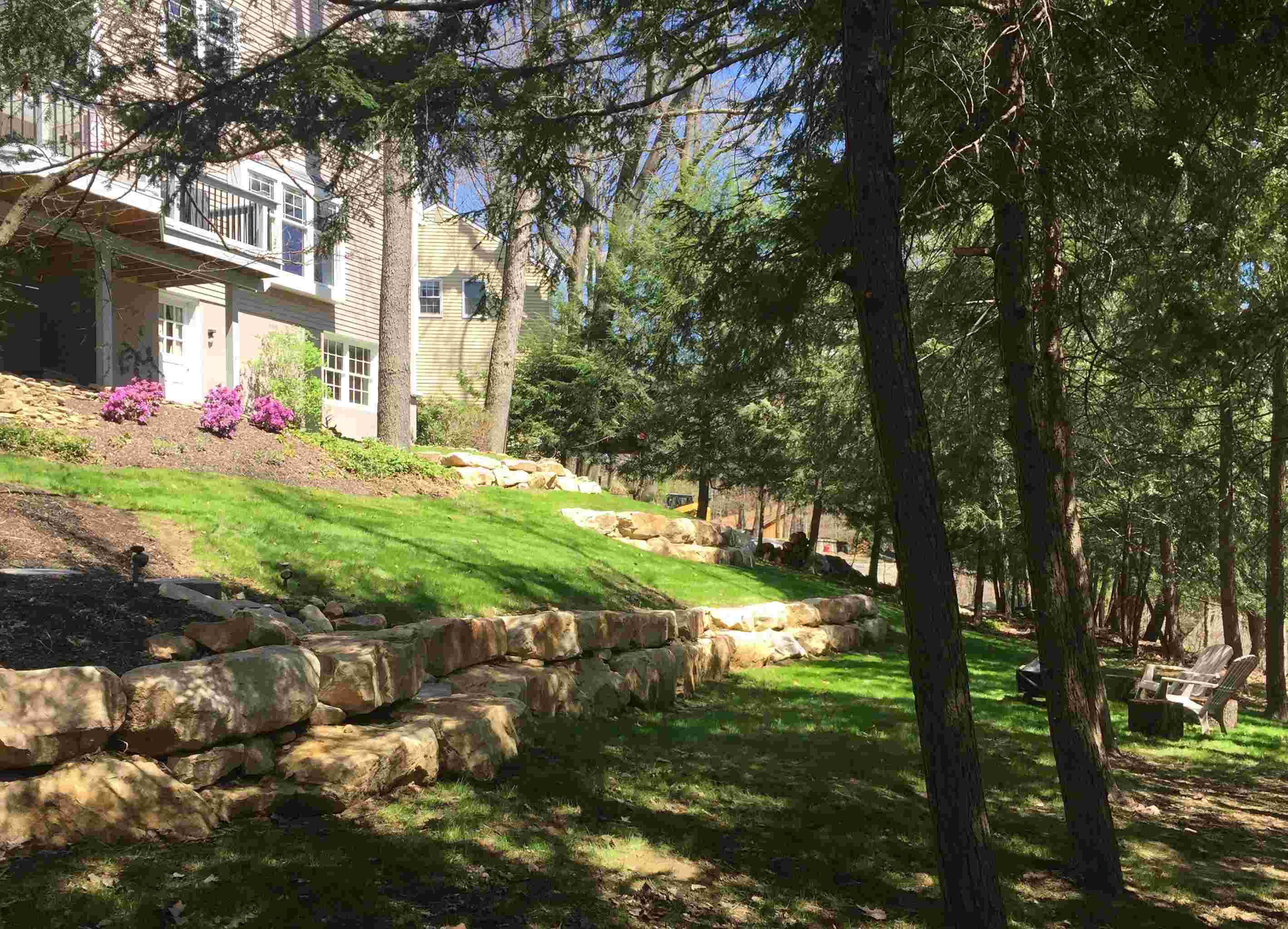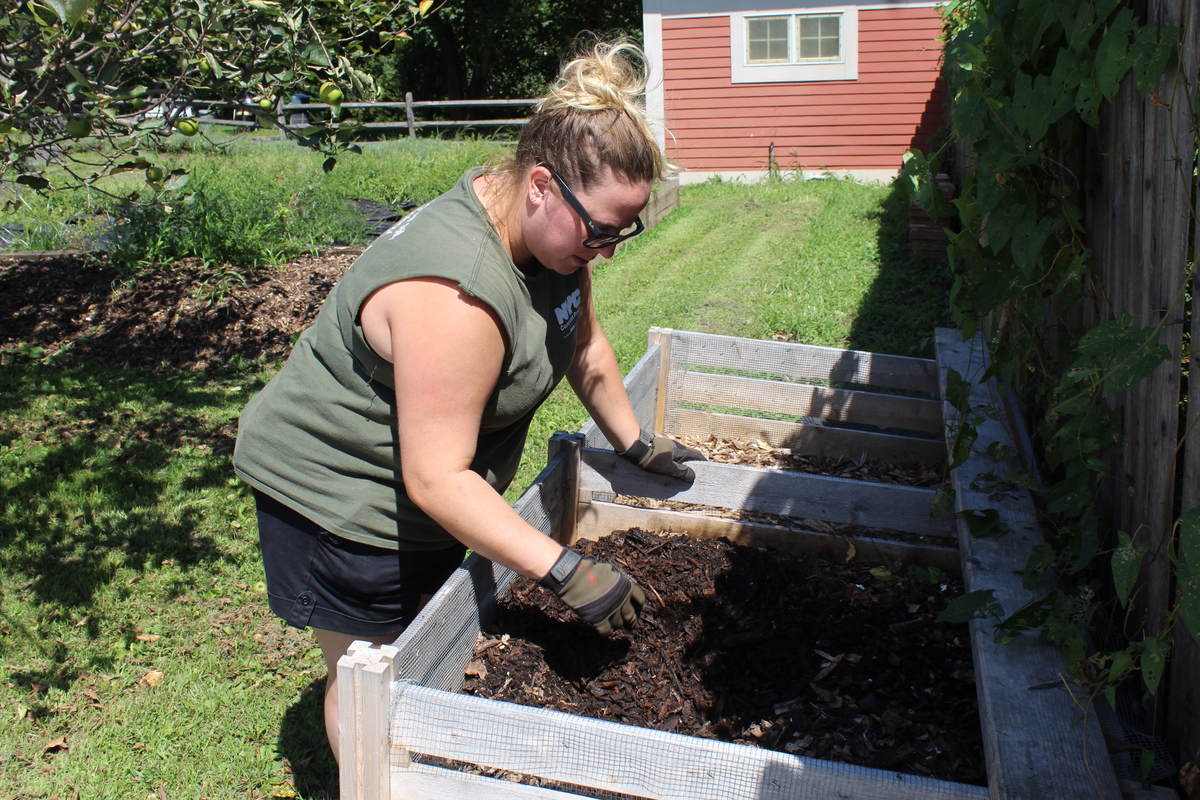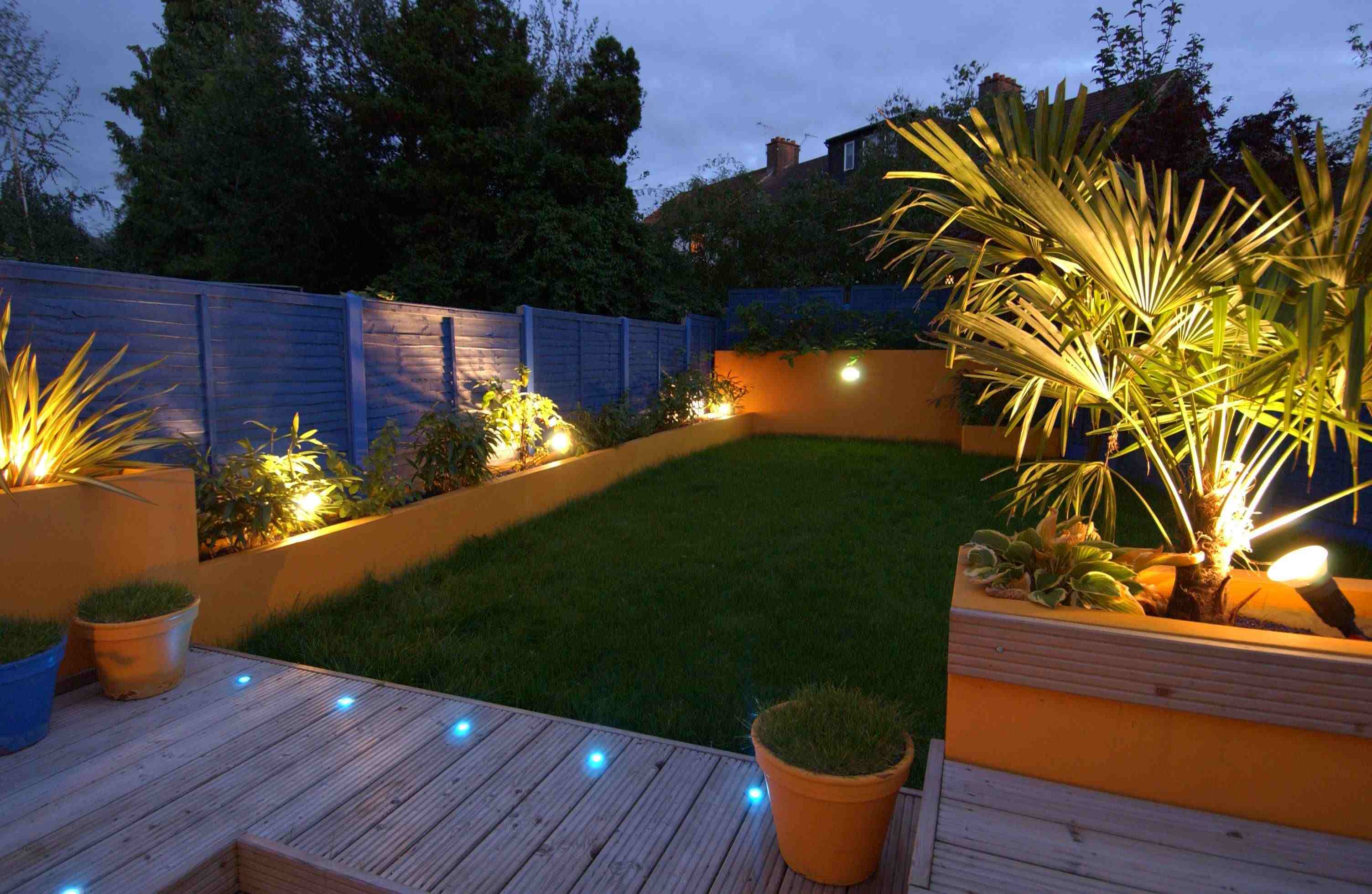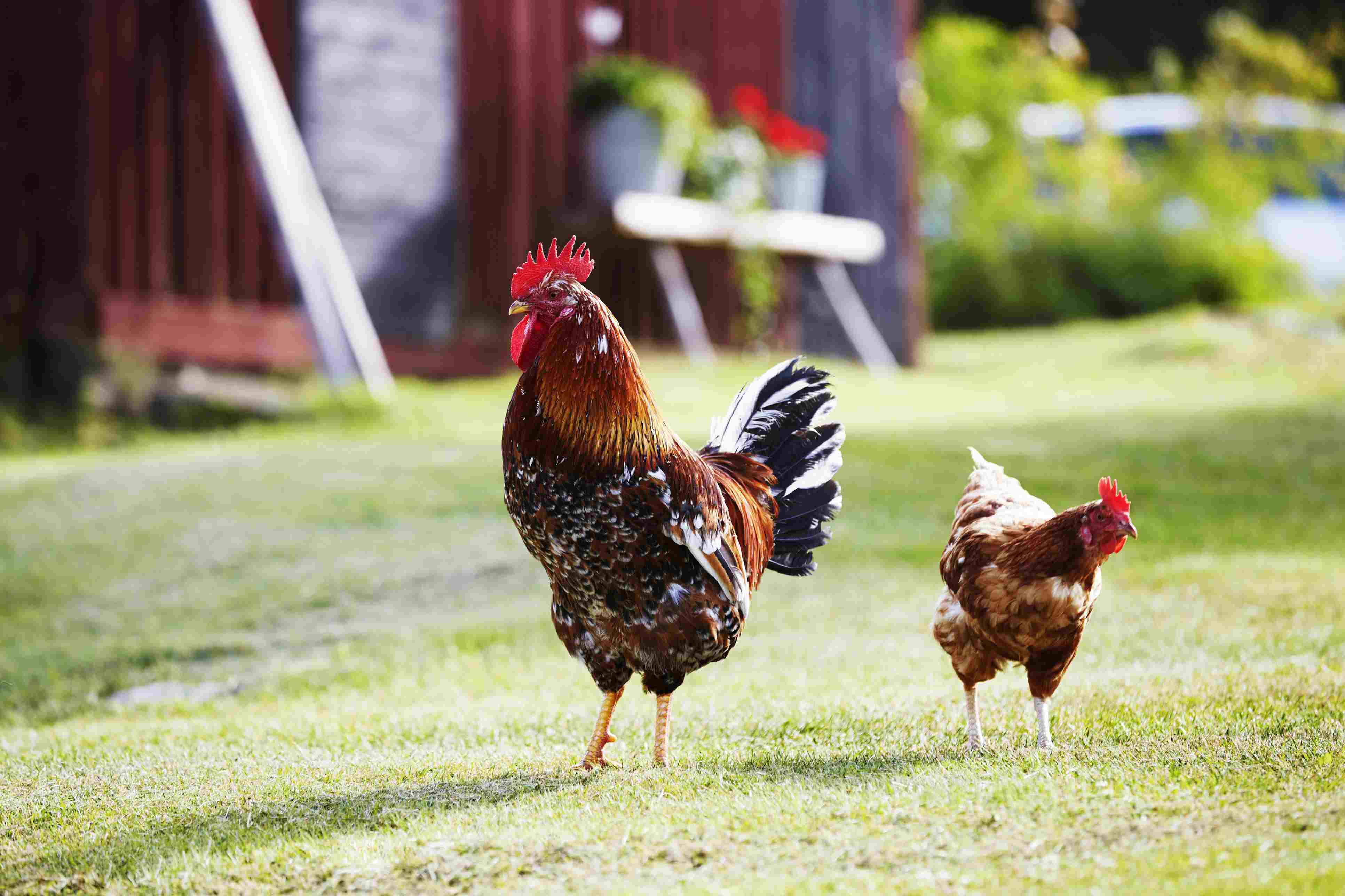Home>Garden Design>How To Reduce Freeway Noise In Backyard
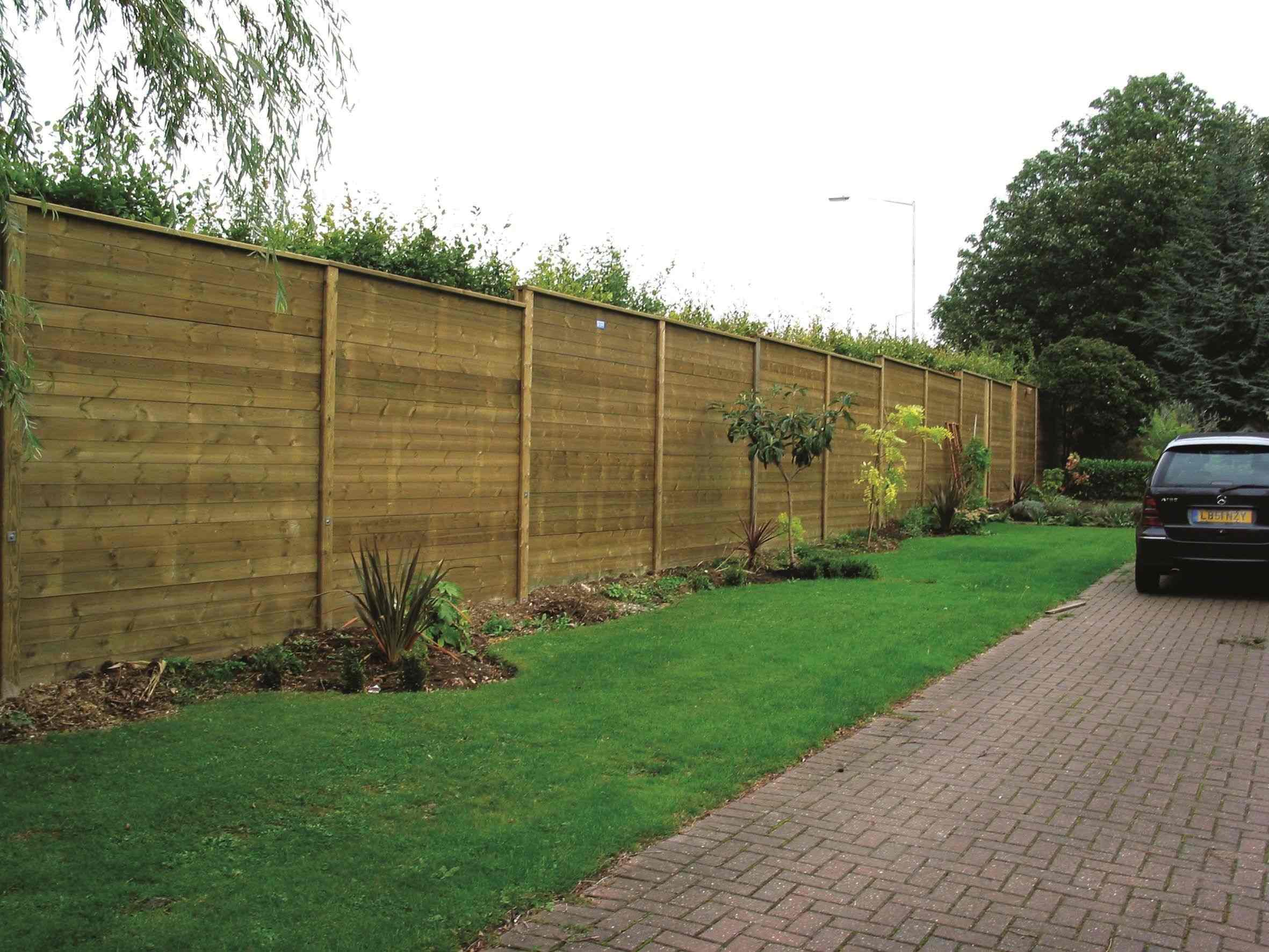

Garden Design
How To Reduce Freeway Noise In Backyard
Modified: January 22, 2024
Discover effective tips for reducing freeway noise in your backyard while planning your garden. Create a peaceful outdoor space with practical strategies and soundproofing techniques.
(Many of the links in this article redirect to a specific reviewed product. Your purchase of these products through affiliate links helps to generate commission for Chicagolandgardening.com, at no extra cost. Learn more)
Table of Contents
Introduction
Welcome to your guide on how to reduce freeway noise in your backyard. Living near a busy freeway can be challenging, especially when it comes to enjoying the peace and tranquility of your outdoor space. The constant noise can disrupt relaxation, conversations, and even sleep. However, there are several effective strategies you can implement to minimize the impact of freeway noise and create a more serene environment in your backyard.
Understanding the nature of freeway noise and how it travels is essential in finding the right solution. Freeway noise is a combination of tire hum, engine noise, and wind noise generated by vehicles traveling at high speeds. This noise can travel quite a distance, and sound waves can easily penetrate through open spaces, fences, and even some buildings.
In this guide, we will explore various techniques and tips to help you reduce freeway noise in your backyard. Whether you are looking for natural solutions, construction methods, or high-tech soundproofing options, we have got you covered. Keep in mind that while these methods can significantly reduce the impact of freeway noise, it may not completely eliminate it. However, by combining different strategies, you can create a much quieter and more enjoyable outdoor space.
Before diving into the specific techniques, it’s important to assess your backyard and identify the areas where noise is most pronounced. By understanding the layout of your space and the direction of the freeway noise, you can tailor your noise reduction efforts. Remember, every backyard is unique, and the effectiveness of each method may vary depending on factors such as distance from the freeway, the terrain, and the types of structures already in place.
Now, let’s explore the different methods that you can implement to reduce freeway noise in your backyard. From creating natural barriers to utilizing soundproofing materials, there are plenty of options to choose from. Read on to discover the best strategies for transforming your outdoor oasis into a peaceful haven away from the hustle and bustle of the nearby freeway.
Understanding Freeway Noise
Before we delve into the various methods to reduce freeway noise in your backyard, it’s essential to understand how freeway noise works and how it can affect your outdoor space. Freeway noise is a combination of different sounds, including tire hum, engine noise, and wind noise caused by vehicles traveling at high speeds.
One important factor to consider is how sound waves travel. Sound waves are created by vibrations, and these vibrations spread through the air in all directions. When sound waves encounter an obstacle, such as a fence or a building, they can either be absorbed, reflected, or transmitted through it. This means that even if you have a solid fence or wall, some of the sound waves will still penetrate through it, although at a reduced intensity.
The intensity of freeway noise depends on various factors, including the distance from the freeway, the type of vehicles passing by, the terrain, and the existing features in your backyard. For example, if your backyard opens up directly to the freeway, you are likely to experience higher levels of noise compared to a backyard that is further away or has natural barriers in place.
It’s also important to note that freeway noise can be affected by weather conditions. Sound waves can travel farther on calm, still days, while windy conditions can disrupt and scatter the noise. Additionally, vegetation, such as trees and shrubs, can act as natural buffers, absorbing and diffusing sound waves to some extent.
Understanding these factors will help you determine the best strategies to reduce freeway noise in your backyard. Different methods work better in different scenarios, so it’s crucial to assess your backyard and consider the specific challenges posed by the freeway noise in your area.
Now that we have a better grasp of how freeway noise works, let’s move on to assessing your backyard and identifying the areas that require noise reduction measures. By understanding the specific noise challenges you face, you can choose the most effective strategies to create a quieter and more peaceful outdoor environment.
Assessing Your Backyard
Before you start implementing noise reduction measures in your backyard, it’s important to assess the space and identify the areas that are most affected by freeway noise. By understanding the layout of your backyard and the direction from which the noise originates, you can strategically plan your noise reduction efforts.
Begin by spending some time in your backyard and listening carefully to the noise. Pay attention to the areas where freeway noise is most pronounced. These may be areas closest to the freeway or spots where sound seems to reverberate or concentrate. Take note of any existing structures, such as fences, walls, or vegetation, and evaluate their effectiveness in blocking or reducing the noise.
Consider the terrain of your backyard as well. If you have a sloped or uneven yard, this can impact how sound travels and where it accumulates. Areas with natural dips or valleys may act as sound traps, so it’s important to factor in the topography when developing your noise reduction plan.
Next, determine the specific activities you want to enjoy in your backyard and how noise impacts them. For example, if you love hosting outdoor gatherings or practicing yoga, you’ll want to focus on reducing noise in the areas where these activities take place. Understanding your unique needs and priorities will help you allocate resources effectively.
Consider the overall aesthetic and design of your backyard as well. You may have certain features, such as a seating area, swimming pool, or garden, that you want to protect from excessive noise. Take into account the placement of these features and how they interact with the surrounding noise.
In addition to assessing the existing features, also consider any future plans you may have for your backyard. If you’re considering building structures or planting trees, it’s helpful to factor these into your noise reduction plan from the beginning.
By thoroughly assessing your backyard and understanding its unique characteristics, you’ll be better equipped to choose the most effective noise reduction strategies. Whether it’s creating natural barriers, using soundproofing materials, or planting vegetation, a comprehensive assessment will ensure you address the particular noise challenges of your backyard.
Creating a Natural Barrier
One of the most effective ways to reduce freeway noise in your backyard is by creating a natural barrier. Natural barriers help to block and absorb sound waves, providing a buffer between your outdoor space and the freeway.
Here are some strategies you can implement to create a natural barrier:
- Planting Trees and Shrubs: Trees and shrubs not only add beauty to your backyard but also act as excellent noise absorbers. Dense foliage and large leaves can help to break up sound waves and reduce their intensity. Choose evergreen trees and shrubs for year-round noise reduction. Position them strategically along the property line or in areas where noise is most prevalent.
- Using Tall Grasses and Bamboo: Tall ornamental grasses and bamboo can also serve as effective noise barriers. Their dense growth and flexible stems absorb sound waves and create a natural shield. Plant them in clusters or rows to maximize their noise-reducing effect.
- Building a Berm: A berm is a raised area of soil that can be used to create a physical barrier against freeway noise. It’s a mound-like structure that can be covered with vegetation to blend seamlessly with your backyard. The height and width of the berm will depend on the level of noise you wish to block. Consult with a landscaping professional to design and construct a berm that suits your needs.
When creating a natural barrier, it’s important to consider the distance between the barrier and your backyard. The closer the barrier is to the source of noise, the more effective it will be in reducing the sound. Additionally, planting a variety of different trees, shrubs, grasses, and bamboos will further enhance the noise-reducing capabilities, as different plant species can complement each other in absorbing sound waves.
Creating a natural barrier not only reduces freeway noise but also adds beauty, privacy, and biodiversity to your backyard. It’s a long-term solution that can improve your outdoor living experience while benefiting the environment.
Building a Fence or Wall
Another effective strategy for reducing freeway noise in your backyard is to build a fence or wall. A solid structure acts as a physical barrier, blocking and deflecting sound waves and providing a quieter outdoor environment.
Consider the following tips when building a fence or wall:
- Choose the Right Material: Opt for dense and solid materials that effectively block sound, such as brick, concrete, or stone. These materials absorb and reflect sound waves, minimizing their impact on your backyard. Avoid materials with gaps or openings, as they allow sound to pass through.
- Height and Thickness: The height and thickness of the fence or wall will directly impact its noise-reducing capabilities. The higher and thicker the structure, the more sound it will deflect. Ideally, the fence or wall should be at least six feet tall and sufficiently thick.
- Seal Any Gaps: Ensure that there are no gaps or openings in the fence or wall that would allow sound waves to pass through. Use caulk or sealant to close any visible spaces and make the structure as airtight as possible.
- Consider an Angled Design: If feasible, design the fence or wall with an angled shape. This can help to deflect sound away from your backyard and reduce its intensity. Consult with a professional contractor or architect to determine the best design for maximum noise reduction.
- Add Acoustic Panels: For enhanced noise reduction, consider installing acoustic panels on the surface of the fence or wall. These panels are designed to absorb sound waves and further reduce the impact of freeway noise. They come in various sizes and materials, including wood, metal, and composite.
Building a fence or wall is a straightforward yet effective method to create a physical barrier against freeway noise. It not only provides noise reduction benefits but also enhances privacy and security in your backyard. Ensure that the structure complies with local building codes and regulations and consult with professionals for design and installation advice.
Installing Soundproofing Panels
If you’re looking for a high-tech solution to reduce freeway noise in your backyard, installing soundproofing panels is a great option. Soundproofing panels are specifically designed to absorb, block, and dampen sound waves, providing an effective barrier against unwanted noise.
Consider the following steps when installing soundproofing panels:
- Identify Problem Areas: Assess your backyard and determine the areas where freeway noise is most problematic. This will help you decide where to install the soundproofing panels for maximum effectiveness.
- Choose the Right Panels: There are various types of soundproofing panels available, including acoustic foam panels, fiberglass panels, and fabric-wrapped panels. Each type has its own noise-reducing properties, so choose the one that best suits your needs and budget.
- Measure and Cut: Measure the dimensions of the areas where you plan to install the panels. Use a sharp knife or saw to cut the panels to the appropriate size.
- Mounting Options: Determine the best way to mount the soundproofing panels. They can be mounted directly onto walls, fences, or other structures using adhesive or fastening materials. Alternatively, they can be hung from metal or wooden frames for a more flexible installation.
- Seal Any Gaps: Ensure that there are no gaps or openings between the panels and the surrounding structures. Use sealant or weatherstripping to close any visible spaces, ensuring a tight fit that minimizes sound leakage.
- Consider Combining Methods: For optimal results, consider combining soundproofing panels with other noise reduction methods, such as planting trees or constructing a fence or wall. This multi-layered approach will provide the best possible noise reduction outcome.
Soundproofing panels offer a technologically advanced solution to reduce freeway noise and create a more peaceful backyard. They are customizable, easy to install, and can be used in combination with other noise reduction strategies to enhance their effectiveness. Consult with experts in soundproofing installations to ensure proper installation and maximize the noise reduction benefits.
Planting Trees and Shrubs
One of the most natural and aesthetically pleasing ways to reduce freeway noise in your backyard is by planting trees and shrubs. These green additions not only enhance the beauty of your outdoor space but also serve as effective noise barriers, absorbing and diffusing sound waves.
Consider the following tips when planting trees and shrubs to reduce freeway noise:
- Select the Right Species: Choose trees and shrubs that are known for their dense foliage and sound-absorbing properties. Evergreen trees and shrubs are particularly effective as they provide year-round noise reduction. Some excellent choices include Leyland cypress, Thuja green giants, and Viburnum.
- Strategic Placement: Position the trees and shrubs strategically to create a barrier between your backyard and the freeway. Focus on areas where noise is most prominent, such as along the property line or near windows and seating areas.
- Create Layers: Planting trees and shrubs in multiple rows or staggered formations can enhance their noise-reducing capabilities. This layered approach helps to break up sound waves and provides a more effective barrier against freeway noise.
- Consider the Height: Opt for trees and shrubs that grow to a suitable height to block and absorb sound waves. Taller trees can effectively deflect noise, while shrubs can act as lower-level noise absorbers.
- Maintain Healthy Growth: Proper tree and shrub care is essential to ensure their continued effectiveness in reducing freeway noise. Regular pruning, watering, and fertilizing will promote healthy growth and maintain the density of foliage required for maximum sound absorption.
- Combine with Other Methods: Planting trees and shrubs is most effective when combined with other noise reduction methods, such as installing a fence or using soundproofing panels. This multi-layered approach will provide optimal noise reduction results.
Planting trees and shrubs not only helps to reduce freeway noise but also contributes to a greener and more environmentally friendly backyard. They provide shade, improve air quality, and attract wildlife, creating a harmonious and tranquil outdoor space.
Adding Water Features
Water features can be a beautiful and effective way to reduce freeway noise in your backyard. The soothing sound of running water can help to mask the noise from the nearby freeway, creating a more peaceful and serene environment.
Consider the following tips when adding water features to reduce freeway noise:
- Choose the Right Water Feature: There are various types of water features you can choose from, such as fountains, waterfalls, or ponds. Select a water feature that suits the size and style of your backyard, as well as your personal preferences. Keep in mind that the sound produced by the water feature should be pleasant and soothing.
- Positioning: Place the water feature in an area where freeway noise is most noticeable or in a spot that you spend the most time. This will help to drown out the sound with the calming sound of flowing water.
- Consider the Size: The size of the water feature can affect its noise-masking capabilities. A larger water feature will produce a louder sound that can help to block out freeway noise more effectively.
- Add Sound-Dampening Elements: Incorporate sound-dampening materials into the design of the water feature to enhance its noise-reducing properties. For example, using rocks or pebbles at the bottom of a pond can help to absorb sound waves.
- Improve Aesthetic Appeal: Water features not only reduce noise but also add visual appeal to your backyard. Choose a design and placement that complements the overall aesthetics of your outdoor space and creates a tranquil ambiance.
- Maintain Proper Operation: Regularly maintain and clean your water feature to ensure it functions optimally. Keeping the water clean and free from debris will improve its performance in masking freeway noise.
Adding a water feature can significantly transform your backyard into a serene oasis, masking the unwanted noise from the nearby freeway. The combination of visual beauty and soothing sound creates a peaceful environment where you can relax and unwind.
Using White Noise Machines
White noise machines are an effective and convenient solution for reducing freeway noise in your backyard. These devices emit a consistent and soothing sound that can help to mask the sounds of traffic and create a more peaceful outdoor environment.
Consider the following tips when using white noise machines to reduce freeway noise:
- Choose the Right Machine: There are various types of white noise machines available, ranging from portable devices to built-in systems. Select a machine that suits your needs, taking into consideration factors such as coverage area and sound quality.
- Positioning: Place the white noise machine in a location where it can effectively cover the area impacted by freeway noise. Experiment with different positions to find the optimal placement for maximum noise reduction.
- Adjust Volume and Settings: Customize the settings of the white noise machine to create the desired sound ambiance. You can adjust the volume and tone to find the right balance between masking the freeway noise and creating a relaxing atmosphere.
- Use Timers and Sleep Modes: Most white noise machines come with timers and sleep modes. Set the machine to turn on automatically during periods when freeway noise is most prevalent, such as in the evening or during nighttime hours.
- Combine with Other Methods: Using a white noise machine in combination with other noise reduction methods can provide even better results. For example, placing the machine near a water feature or using it in conjunction with a natural barrier or fence can enhance the overall noise reduction effect.
- Consider Portable Options: If you prefer flexibility, consider using a portable white noise machine that you can take with you throughout the backyard. This allows you to enjoy a peaceful environment wherever you go.
White noise machines offer a convenient and customizable solution to reduce freeway noise. They can be easily adjusted to create the desired sound atmosphere, and their portable options allow you to enjoy a quieter backyard experience wherever you choose.
Constructing a Noise Barrier
Constructing a noise barrier is a more extensive solution for reducing freeway noise in your backyard. A noise barrier is a physical structure specifically designed to block and deflect sound waves, creating a quieter outdoor space.
Consider the following tips when constructing a noise barrier:
- Consult with Professionals: Constructing a noise barrier requires expertise in engineering and construction. Consult with professionals who specialize in noise reduction solutions to design and build an effective barrier tailored to your backyard and specific noise challenges.
- Determine the Right Height and Width: The height and width of the noise barrier will depend on the level of noise you want to block and the layout of your backyard. Generally, the higher and wider the barrier, the more sound it will deflect. Work with experts to determine the ideal dimensions for maximum noise reduction.
- Choose the Proper Materials: Select materials that are dense and heavy, capable of absorbing and deflecting sound waves. Common materials for noise barriers include concrete, brick, wood, or composite materials. The choice of material will depend on factors such as budget, aesthetics, and effectiveness.
- Consider the Design: Noise barriers can be designed with various shapes and styles. The design can be customized to blend seamlessly with your backyard’s aesthetics, ensuring the barrier does not disrupt the overall visual appeal of the outdoor space.
- Address Gaps and Openings: Ensure that there are no gaps or openings in the noise barrier that would allow sound waves to pass through. Use sealants or weatherstripping to close any visible spaces and create a more soundproof structure.
- Combine with Greenery: Planting trees, shrubs, or climbing vines along the noise barrier can further enhance its effectiveness. Vegetation helps to absorb sound waves and creates a more visually appealing barrier.
Constructing a noise barrier requires careful planning and consideration of various factors. It is a more permanent and long-term solution that can significantly reduce freeway noise in your backyard, creating a peaceful and enjoyable outdoor environment.
Conclusion
Reducing freeway noise in your backyard is achievable through a combination of strategies that address both the physical and auditory aspects of the problem. By implementing the methods discussed in this guide, you can create a more peaceful and enjoyable outdoor space that is shielded from the disturbances of nearby traffic.
Understanding the nature of freeway noise and assessing your backyard’s specific challenges are essential first steps. From there, you can explore the various techniques available to you:
Creating a natural barrier with the strategic placement of trees and shrubs helps absorb and diffuse sound waves. Building a solid fence or wall offers a physical barrier that can block and deflect noise. Installing soundproofing panels further reduces sound transmission through walls and fences. Adding water features not only makes a soothing sound but also masks unwanted noise. Utilizing white noise machines provides ambient sounds that cover the sound of the freeway. And, for those seeking a more extensive solution, constructing a noise barrier can significantly reduce noise levels.
Remember, the effectiveness of each method may vary based on factors such as proximity to the freeway, local terrain, and existing structures. Combining different strategies tailored to your specific backyard will yield the best results.
Creating a quiet and peaceful backyard oasis requires time, effort, and creativity. Consider consulting with professionals in landscape design, acoustics, or construction to ensure that you implement the most effective solutions and achieve the desired results. Whether you prefer natural elements, technological advancements, or a combination of both, there are options available to help you reduce freeway noise and create a serene outdoor space.
Take control of the noise pollution and transform your backyard into a tranquil haven where you can relax, unwind, and enjoy the beauty of nature without the constant disturbances of freeway noise.
